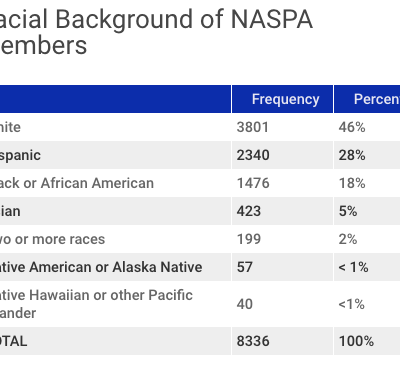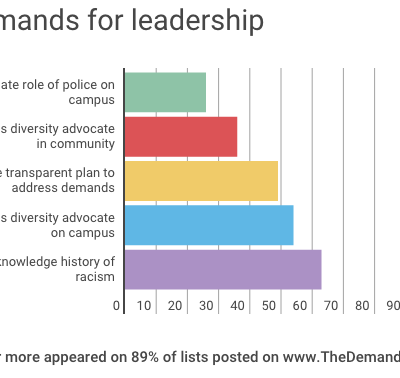“Am I overreacting?” Understanding and Combating Microaggressions
Many people of color, women, LGBTQ and other “minoritized” groups on college and university campuses experience microaggressions on a regular basis. We can no longer merely work toward multiculturalism and inclusivity, but rather we must address the larger systemic issues that allow racial microaggressions to flourish on campus.
July 27, 2016

Individual Acts of Inclusivity Have the Greatest Impact
There has been a great deal of energy expended on diversifying the faculty on college campuses in recent years, and the discussion has ramped up lately with the focus on student protests and demands for a more inclusive campus climate. ACE’s Kim Bobby discusses effective processes for building and retaining a diverse faculty—and how true inclusivity takes individual self-reflection and action.
July 25, 2016

Affirming Racial Diversity: Student Affairs as a Change Agent
As we continue the discussion about race on college campuses, an important question is emerging: Are institutions of higher education the correct entities to task with addressing racial issues in the United States? Amelia Parnell of NASPA – Student Affairs Administrators in Higher Education looks at the role student affairs professionals can play in advocating for diversity on their campus.
June 29, 2016

Addressing Islamophobia on College Campuses
In the latest post in our series sparked by recent student protests and the national dialogue on diversity and inclusion, Mary Ann Bodine Al-Sharif and Penny A. Pasque discuss the climate at U.S. colleges and universities for Muslim students, faculty and staff.
May 4, 2016

Dynamic Diversity: How Campus Leaders Can Respond to Student Protests
Liliana Garces and Uma Jayakumar explore the concept of dynamic diversity, a new model for understanding critical mass, promoting inclusive environments and facilitating the benefits of educational diversity on campus. This is the latest post in a series sparked by recent student protests and the national dialogue on diversity and inclusion.
April 20, 2016

Racial Climate on Campus: A Survey of College Presidents
ACE’s Center for Policy Research and Strategy fielded its first national Pulse Point anonymous online survey of college and university presidents in January 2016 to better understand their experiences, perceptions and (re)actions on the timely issue of campus racial climate. Lorelle Espinosa, Hollie Chessman and Lindsay Wayt look at the results.
March 8, 2016

Embracing Student Activism
Cassie Barnhardt of the University of Iowa and Kimberly Reyes of the University of Michigan write on the need for campus leaders to engage student activism so higher education can continue to be an agent of social change. This is the latest post in a series sparked by recent student protests and the national dialogue on diversity and inclusion.
March 2, 2016

Inclusivity, History, and Navigating the Way Forward
Reaching more low‐income, underrepresented-minority, and first-generation student populations must hold a prominent place not just in our institutions’ but in our nation’s priorities as well. William E. Kirwan, chancellor emeritus of the University System of Maryland, asks if higher education is prepared to lead on the issues of inclusion facing institutions today.
February 17, 2016

Reconsidering the Pipeline Problem: Increasing Faculty Diversity
Kimberly A. Griffin writes that a pathway is a better metaphor than a pipeline when considering how to diversify college and university faculty. This is the third in a series sparked by recent student protests and the national dialogue on diversity and inclusion.
February 10, 2016

Breaking the Cycle
Anne-Marie Nuñez suggests looking to Hispanic-Serving Institutions as a model for how to build an inclusive campus racial climate. Nuñez is an associate professor in the Educational Leadership and Policy Studies Department at the University of Texas at San Antonio. This is the second in a series sparked by recent student protests and the national dialogue on diversity and inclusion.
February 4, 2016

What Are Students Demanding?
ACE’s Hollie Chessman and Lindsay Wayt analyze the demands from student organizers across 76 higher education institutions and coalitions. This post is the first in a series sparked by recent student protests and the national dialogue on diversity and inclusion.
January 13, 2016